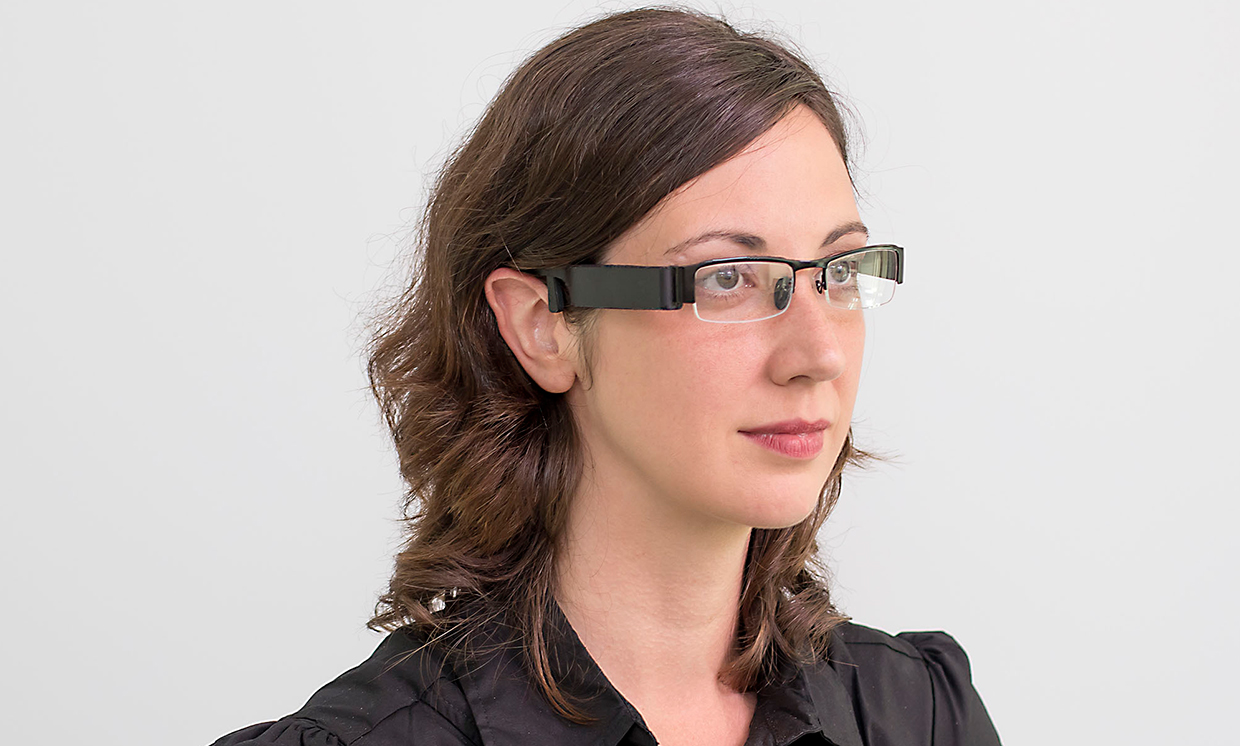Microsoft glasses track blood pressure
- Transfer
Microsoft's Glabella project is going to keep abreast of patients

It is unlikely that anyone feels stylish, without taking off his wristband all day to measure pressure - even when their health and, possibly, their life, depend on constant monitoring. One of the alternatives to this may be Microsoft glasses, which can unobtrusively monitor blood pressure while the spectacles go about their daily business.
Smart glasses developed by the Glabella ProjectMicrosoft Research divisions use optical pulse sensors to track blood flow through various parts of the arteries in a person’s head. Measuring the passage of the pulse - the time interval for which, after each heartbeat, a pressure wave travels between two sections of the artery - provides a way to indirectly measure blood pressure without any effort or inconvenience from the wearer. Ease of use may appeal to people suffering from health problems such as hypertension, who require constant measurement of blood pressure outside hospital walls.

“The code name for the research project was given in honor of [ glabella ,] the approximate location of one of the sensors in our device, built into the nosepieces of ordinary glasses,” said Christian Holtz , a researcher at Microsoft Research located in Redmond, WA. “This allows the sensor to seamlessly merge with an acceptable wearable device in society, constantly interrogating the carrier’s pulse at a key location point.”
Researchers at the company filed a patent application for a “head-mounted device for taking heart rate readings” in June 2017, but the application was published on the Internet only last month. They also described the scheme of Glabella glasses and the results of trial tests in the report.published in the September 2017 issue of Proceedings of the ACM Journal of Interactive Mobile, Wearable and Ubiquitous Technologies .

This kind of hidden tracking, which the Glabella Project promises, does not require the carrier to carry out any actions manually - for example, do not forget to put the bracelet on to measure it at a certain time of the day. It is also more convenient and not as noticeable as a semi-automatic bracelet for measuring pressure, which periodically self-inflates. The carrier is not even required to make any gestures or movements, as is necessary in the case of smart watches that measure heart rate using a similar method.
The current prototypes of glasses can not be called trendy, but they seem comfortable enough for everyday wear, and weigh only 45 grams; typical glasses weigh 37 grams. Holtz and his Warby Parker colleague, Edward Vaughn , created a special printed circuit board, which is located in the frame of ordinary glasses. Glasses are able to work all day on a fully charged small tablet battery.

They also created special pulse sensors that are configured to recognize reflected signals from arterial blood in specific places of the carrier’s head. Current prototype glasses were tested on two different combinations of sensor locations: the nasal supports and the superficial temporal artery (located in front of the ear) or the occipital artery(behind the ear). In the first case, the signal is better, and in the second, the device “can potentially become completely invisible” in the form factor of points, Holtz explains.
Researchers scored relatively young Microsoft employees aged from 20 with a little to 40 with a little years for a trial of points. The four test subjects did the usual office work, talking while their glasses were recording their blood pressure. They also manually measured the pressure at a specific time of the day using a standard cuffed device to indicate basic values with which to compare data from a wearable device.
Although the test was successful, until you should hurry and look for Glabella glasses in stores. One of the problems that researchers still need to solve is related to the choice of the most practical approach to calibrating the obtained measurements for each individual without the need for constant pressure checks using classical devices. They plan to try out the glasses in a clinical setting, comparing them with very accurate invasive pressure measurements with the help of needles — patients in a university hospital can participate in this study.
The research team is also developing a new version of glasses with reduced frames, more efficient power consumption and improved signal recognition. Ideally, they seek to reduce the device to the size of a clothespin that can fit on any glasses.
Whether Microsoft’s Glabella glasses or some other wearable device becomes a breakthrough, convenient and constant monitoring of blood pressure can help to relate pressure and factors such as walking or jogging, eating certain foods and taking medicine more closely. Continuous data collection on a large scale can even ever lead to improvements in the medical understanding of various diseases thanks to pressure data collected from hundreds or thousands of people throughout the day.
